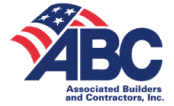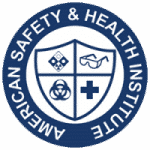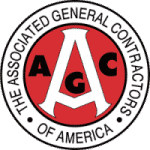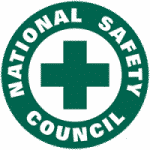
VIRGINIA DEPARTMENT OF LABOR AND INDUSTRY
Virginia Occupational Safety and Health (VOSH) Program
The Virginia Department of Labor and Industry (DOU) operates the Virginia State Plan for Occupational Safety and Health (VOSH) through a grant from the U.S. Department of Labor – Occupational Safety and Health Administration (OSHA). VOSH has exclusive jurisdiction over private and state and local government employers and employees in Virginia for purposes of enforcing occupational safety and health laws and regulations.
Injury and illness rates for Virginia State and Local Government employees are 60% higher than private industry in Virginia.[1]
In 2016, Virginia General Assembly Senate Bill 607 was signed into law to direct the Virginia Safety and Health Codes Board to adopt regulations for the issuance of proposed penalties to the Commonwealth, its agencies, authorities[2], instrumentalities, political subdivisions, or any public body. The Virginia Safety and Health Codes Board adopted a proposed regulation on February 16, 2017, amending the VOSH Administrative Regulations Manual (ARM), 16VAC25-60-260. The final regulation was adopted on November 30, 2017.
The regulation takes effect November 1, 2018 and will be applied to VOSH inspections opened on or after December 1, 2018.
Information on the final regulation is on the Virginia Regulatory Town Hall at:
http://townhall.virginia.gov/L/ViewAction.cfm?actionid=4681
Penalties may be issued to state and local government employers for willful, repeat and failure-to-abate violations, as well as serious violations that cause a fatal accident or are classified as “high gravity” (High Severity/Greater Probability).[3]
VOSH Maximum Penalties for the following violation types[4] :
Serious: $12,726
Willful: $127,254
Repeat: $127,254
Failure to Abate: $12,726 per day
State and local government non-high gravity serious and other-than-serious violations will not receive penalties.
VOSH Penalty Calculation Factors
As provided for in Va. Code §40.1-49.4.A.4(a), VOSH penalty calculation procedures are required to take into account the:
- gravity of the violation,
- size of the employer’s business,
- good faith of the employer, and
- history of previous violation
See VOSH Field Operations Manual, Chapter 11, Penalties[5] for details on gravity, size, good faith and history, except as noted below.
VOSH generally follows OSHA’s Gravity Based Penalty (GBP) methodology for calculating proposed penalties, which includes an assessment of the “Severity” of the hazard cited and the “Probability” that an injury or illness would result from the cited hazard.
“Severity” is classified as High, Medium or Low. “Probability” is classified as Greater or Lesser. There are six main Gravity Based Penalty levels for proposed “serious” violations:
- High Severity/Greater Probability [High Gravity] – only serious violations that are High Gravity will be issued with penalties
- High Severity/Lesser Probability
- Medium Severity/Greater Probability and Medium Severity/Lesser Probability
- Low Severity/Greater Probability and Low Severity/Lesser Probability
Size of Employer Reduction
The maximum allowable size reduction is 70%, but size is determined by the total number of employees employed by the governing body (e.g., total employment in state government; total employment in county/city government). No state government agency will receive a penalty reduction for size. Most local government agencies will not receive a penalty reduction for size, unless total government employment for the city or county is 250 or fewer employees.
Good Faith of Employer Reduction
A penalty reduction of up to 25 percent is permitted in recognition of an employer’s “good faith” in increments of 0%, 5%, 10%, 15%, 20% and 25%. The maximum allowable good faith reduction for written safety and health programs is 10%. The maximum allowable good faith reduction for “primary considerations” is 15%. Good Faith – “Primary Considerations” include:
- efforts to comply with VOSH standards before the inspection;
- prompt abatement of violations during the inspection
- employer originated worksite inspection programs
- employee comments on safety and health during the inspection
- the employer’s cooperation and attitude during the inspection
- employer participation in professional organizations
History Reduction
A 10% reduction is given no serious, willful or repeated violations were issued in the past 3 years statewide.
Violations Resulting in Fatal Accidents or Non-fatal Accidents Causing Serious Physical Harm to an Employee – No Reductions
Violations related to the cause of a fatal accident; or a non-fatal accident resulting in serious physical harm to an employee will be classified as high gravity and issued with the maximum statutory penalty. No reductions for good faith, history or size will be applied.
Repeat Violation Policy
- An employer may be cited for a repeated violation if that employer has been cited previously for a substantially similar condition and the citation has become a final order
- Time Limitations. A citation will be issued as a repeated violation if the following apply:
- The citation is issued within 3 years of the final order of the previous citation, or,
- The citation is issued within 3 years of the final abatement date of the previous citation, whichever is later.
No Instance of Statewide Repeated Violations. Employers with multiple establishments or operations, statewide or across VOSH regional boundaries, or without a fixed site of business, may not be cited for statewide repeated violations where the violations occur in different VOSH Regional Office jurisdictions. A multi-facility employer shall be cited for a repeated violation if the violation recurred at any worksite within the same VOSH Regional Office jurisdiction.
[1] Bureau of Labor Statistics, 2016 Survey on Occupational Injuries and Illnesses, https://www.bls.gov/iif/oshstate.htm#VA
[2] The Department considers authorities and instrumentalities such as the Washington Metropolitan Area Transit Authority (WMATA), Washington Metropolitan Airports Authority (WMAA), and the Greater Richmond Transit Company (GRTC Transit System) to be public employers covered by the state and local government penalty regulation.
[3] VOSH estimates that approximately 15 high gravity serious, 3 willful, and 5 repeat violations will be issued to state and local
government employers per year.
[4] Penalties for willful, repeat and failure to abate violations may be issued in cases where the original violation was classified as serious (both high gravity and non-high gravity) or other -than -serious.








